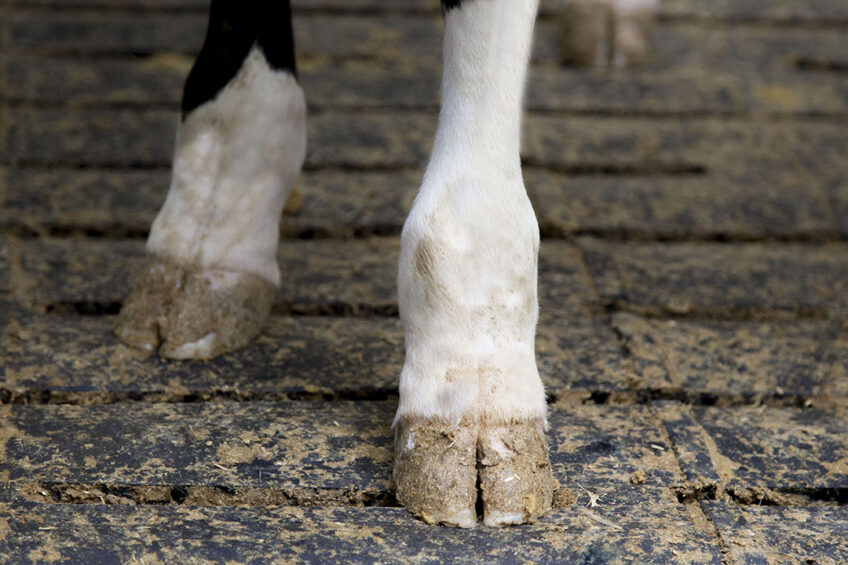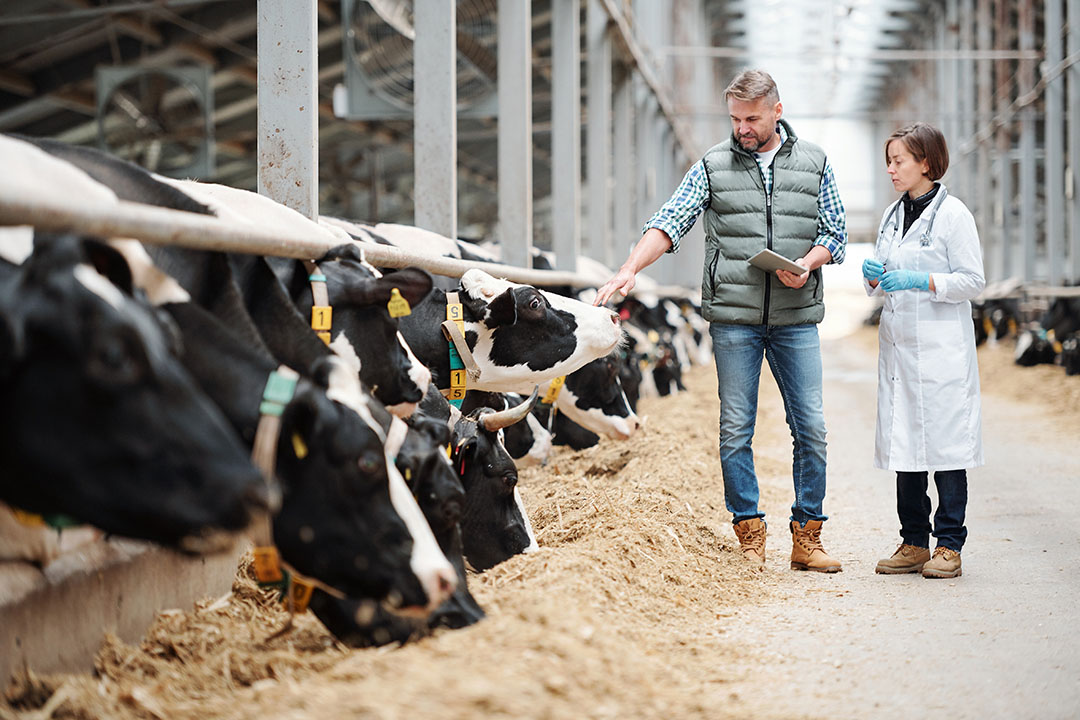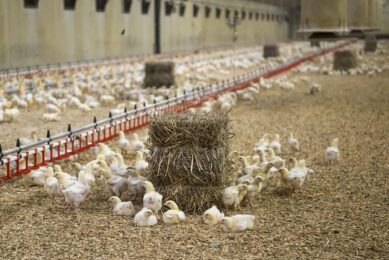Secure profits by investing in cow welfare

Dairy farming plays a vital role to supply global demand of dairy products with the consumption trend following an upward curve. Welfare – positive management and nutrition practices, are becoming a more familiar concept for dairy consumers mostly from an ethical point of view.
Dairy cows are recognised as sentient beings and their welfare remains a subject for researchers focusing mainly on cow health, behaviour, and physiology. Although there is still a lack of knowledge and information on the topic, several studies put emphasis on a cow’s ability to cope with external and internal farm environment and conditions as well as behavioural response to several circumstances related to health and nutrition. Welfare status can be phenomenally described by the basic five freedoms, freedom from pain – injury, diseases, physical and thermal discomfort, fear and distress as well as freedom from hunger, thirst and malnutrition. But how easy is it to offer all cows freedom when it comes to dairy farming?
Importance of production systems
Dairy operations can be categorised in pasture – based and/or in-house production systems. In-house production systems are continuously increasing to meet growing demand and expanding dairy markets, while land availability for pasture-based production shows to be continuously limited. Several studies compared the welfare status among the various breeding systems, yet not enough to conclude a solid outcome. Although, and mainly due to cow freedom, welfare on pasture-based farming is perceived to be better for dairy consumers, there are potential areas of concern among the dairy production cycle. This mainly includes severe negative nutrient supply and exposure to unpredictable weather conditions for the cows. Very few studies have measured physiological parameters to compare welfare status as such yet, found that pasture-based breed cows had higher levels of non-esterified fatty acids (NEFA), β-hydroxybutyrate and triglyceride postpartum, consistent with limited energy supply.
Subclinical metabolic diseases
Long-term genetic selection for high yielding cows continues to depress welfare fundamentals more likely because of cows increasing productivity and calving intervals making them more susceptible to negative energy balance (NEB) and nutrient supply. It is then unavoidable for metabolic diseases to occur. Subclinical metabolic diseases are the silent profit consumers for the modern dairy farming operations thus managing and alleviating such stress factors may have a cumulative financial-positive effect overall in the herd.
Farm design and colostrum management
Farm design and breeding system can also protect and/or expose cows to adverse climatic conditions (cold and/or heat) which remains a potential threat to welfare not only because of metabolic altered functioning outside the thermo-neutral zone, but also due to reduced lying time, known to invoke stress. Stress factors as such, involves activation of the hypothalamic-pituitary gland-adrenal axis to elevate cortisol levels. In response to cold and wet conditions stress, cows with lower body condition score (BCS) are more susceptible. In addition to breeding temperatures, exposure to sunlight maybe beneficial as studies showed positive effects on cardiovascular health, vitamin D synthesis, lower blood pressure and positive immune function. Farm design and colostrum management for youngstock and first calving heifers’ welfare are also critical parameters to define lifetime productivity. Extensively grazed heifers in early stages of life have greater exposure to gastrointestinal parasites and appeared to be anthelmintic resistant with lower growth rates in pre-pubertal period.

Nutrition science and management practices
Holstein Friesian being the dominant breed requires a science-based approach to fulfil its metabolic requirements and especially during the last week(s) pre- and post- partum (transition period). More than 10% of cow treatments are associated with a lack of nutritional management while in the transition period with the main metabolic abnormalities being hypocalcaemia, mastitis, lameness and reproductive issues. Lack of nutritional management during the transition period predispose cows to clinical ruminal and abomasal disorders (DA) with subclinical ruminal acidosis (SARA) often being the highest risk factor. SARA has been characterised as the situation in which rumen experience a pH range of 5.2 to 6 for a prolonged period resulting to an accumulation of volatile fatty acids (VFA) within the rumen. Acids can damage rumen epithelium resulting to lower absorption rates for VFAs. Usually, in-house farming offer total mixed ration feeding (TMR). Evenly cut and mixed feedstuffs can avoid feed sorting thus promoting a more palatable and pH-balanced feed for cows. Pasture-based farming and totally grass-fed cows are more susceptible to acidosis because the forage consumption is based on rapidly fermentable grass, low in structural carbohydrates and inconsistent feeding times. Although individual cows express behavioural needs, high yielding cows are more susceptible to SARA which thereafter usually turns into a syndrome linked with Ruminitis – Laminitis.
Best welfare practices
Monitoring yield and other indexes including BCS loss/gain relative to dietary inputs, seems to be the key to ensure best welfare practices. Fat cows at calving have reduced feed intake in early lactation leading to higher NEB and increased tissue nutrients mobilisation. BCS losses due to high NEB results in subclinical endometritis leading to reduced fertility. Often neglected, calving ease is a critical parameter for welfare because difficult calving and twinning predispose retained placenta, metritis and mastitis. Infertility is driven by metritis by altering the ovarian function, cycle and oocyte competence. Mastitis susceptibility is heritable and linked with reduced fertility. Higher intramammary infections and increased risk of high somatic cell count (SCC) observed more in in-house farming due to higher exposure in environmental pathogens. SCC is often associated with low enzymatic activity due to primary deficiencies of vitamins and trace elements more specifically, deficiency of vitamin E and selenium. Mastitis pre- and post-partum appeared to be linked also with other factors including lower protein and amino acids intake, electrolyte and acid-based imbalances and heat stress levels.
Lameness in dairy cattle
Lameness remains a major health and welfare parameter. Lame cows are in serious pain, discomfort and they are more likely to reduce feed intake (associated with NEB) because of fewer visits to the feeding parlours and lower rumen mobility. It has a complex aetiology lead by all previous metabolic abnormalities. In addition to that, bacterial infections such as digital dermatitis and dysfunction of the horn-producing claw epithelium, leads to sole ulceration. Lameness is the second biggest reason (after infertility) for increased premature culling rates in the modern dairy operations. Studies showed that up to 60% of in-house breed cows appeared to be clinically lame with cases being significant over 180 days post calving. The digital cushion of the claw is impregnated with fat for its shock-absorbing capabilities. Its thickness is directly related to weight losses shortly post calving and up to 3rd-4th month of lactation also showed to be related with claw horn lesions. Although not yet well-defined, gut metabolites, disease-induced toxins and transition period hormonal changes could be additional factors associated with claw horn lesions. Skin lesions (hock and knee) is also an indicator of cow welfare with studies giving a positive association between skin lesions and lameness.
Financial outlook
To date, profit margins in dairy farming continue to be squeezed as production costs rise faster than milk prices. In an effort to overcome that, farmers are breeding cows with higher genetic potential leading to higher susceptibility to energy, nutrients and overall welfare gap. In an era of continuous efforts to reduce the pharmaceutical approach in the herd while in parallel the dairy market focuses on animal welfare claims, the dairy industry needs to re-approach the use of certain feed additives with nutraceutical effects in dairy farming. Animal nutrition and feed science hold the priority for investment studies to help secure profits for the farmer and ensure the welfare of the animals.
References are available on request.
Join 31,000+ subscribers
Subscribe to our newsletter to stay updated about all the need-to-know content in the poultry sector, three times a week. Beheer
Beheer





 WP Admin
WP Admin  Bewerk bericht
Bewerk bericht